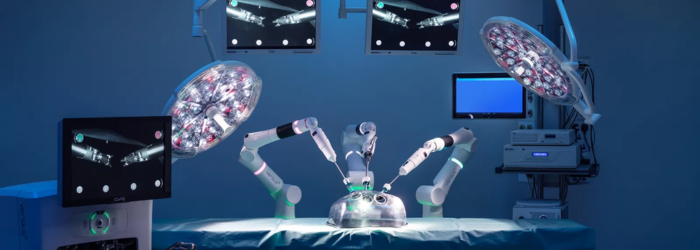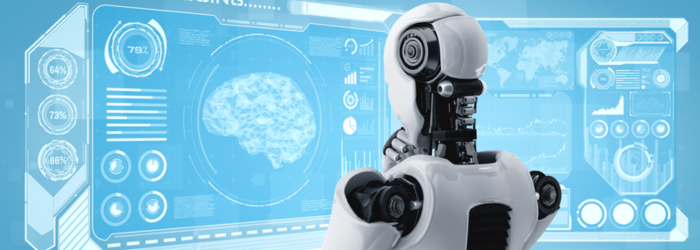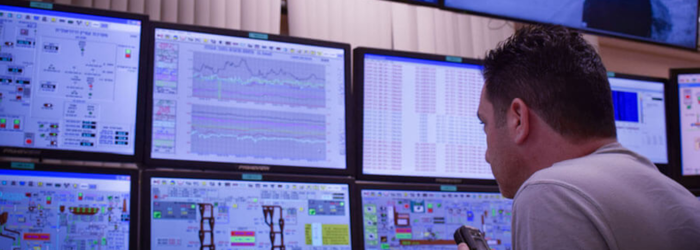As the field of robotics advances, the integration of Artificial Intelligence (AI) is revolutionizing how autonomous robots operate and make decisions. Programming autonomous robots involves equipping them with the ability to perceive, learn, and adapt to dynamic environments. In this blog, we explore the exciting intersection of robotics and AI, delving into the programming techniques that empower robots to function autonomously and intelligently.
1. Understanding Autonomous Robots:
Autonomous robots are equipped with sensors, actuators, and AI algorithms that enable them to operate without continuous human intervention. These robots have the capability to sense their environment, make decisions, and execute actions based on their programming.
2. Key Components of Autonomous Robots:
- Sensors: Enable robots to perceive the environment through visual, auditory, tactile, or other sensory data.
- Actuators: Drive physical movements and interactions with the environment.
- Control System: Implements AI algorithms for decision-making and coordination of actions.
- Communication Modules: Facilitate data exchange between robots and external systems.
3. Programming Techniques for Autonomous Robots:
- Machine Learning: Implementing machine learning algorithms allows robots to learn from data and improve their performance over time. This includes techniques like supervised learning, reinforcement learning, and unsupervised learning.
- Computer Vision: Utilizing computer vision algorithms enables robots to interpret visual data from cameras, enabling tasks such as object recognition, navigation, and gesture detection.
- Natural Language Processing (NLP): Integrating NLP allows robots to understand and respond to human language, enhancing their ability to interact with users and follow verbal commands.
- Sensor Fusion: Combining data from multiple sensors enhances the overall perception of the environment, providing a more comprehensive understanding for decision-making.
- Path Planning: Algorithms for path planning enable robots to navigate complex environments autonomously, avoiding obstacles and reaching their destinations efficiently.
4. AI-Driven Applications in Autonomous Robots:
- Robotics in Healthcare: Autonomous robots can assist in tasks such as surgery, patient care, and medication delivery.
- Autonomous Vehicles: AI powers self-driving cars, drones, and other autonomous vehicles, enabling them to navigate roads and airspace safely.
- Warehouse Automation: Robots equipped with AI efficiently manage inventory, pick and pack orders, and optimize warehouse logistics.
- Agricultural Robotics: Autonomous robots aid in tasks like crop monitoring, precision farming, and harvesting.
5. Challenges in Programming Autonomous Robots:
- Data Quality and Quantity: Machine learning algorithms require substantial amounts of high-quality data for training, which may not always be readily available.
- Real-time Decision-Making: Achieving real-time decision-making poses challenges, especially in dynamic and unpredictable environments.
- Interoperability: Ensuring compatibility and seamless communication between diverse robotic systems and AI frameworks can be complex.
6. Ethical Considerations in Autonomous Robotics:
- Bias in AI: Addressing biases in AI algorithms to ensure fair and ethical decision-making.
- Privacy Concerns: Implementing measures to protect user privacy, especially in applications involving personal data.
7. Future Trends in Autonomous Robotics:
- Edge Computing: Processing data locally on the robot (edge computing) to reduce dependence on external servers.
- Explainable AI: Developing AI models that provide transparent explanations for their decisions.
- Swarm Robotics: Coordinating groups of autonomous robots to work collaboratively on tasks.
8. Benefits of Autonomous Robots:
- Increased Efficiency: Autonomous robots can operate 24/7, leading to enhanced efficiency in various applications.
- Precision and Accuracy: AI-driven algorithms enable robots to perform tasks with a high degree of precision and accuracy.
- Safety: In hazardous environments, autonomous robots can perform tasks without exposing human workers to risks.
9. Real-World Impact:
- Robot-Assisted Surgery: Autonomous robots assist surgeons in performing minimally invasive procedures with greater precision.
- Delivery Drones: AI-powered drones autonomously deliver packages to specified locations.
10. Conclusion:
Programming autonomous robots marks a pivotal moment in the evolution of robotics, where AI transforms them from mere machines into intelligent, adaptive entities. As technology continues to advance, the synergy between robotics and AI promises to revolutionize industries, enhance daily life, and open new frontiers of exploration. The future holds exciting possibilities as autonomous robots become increasingly integral to our interconnected world.





